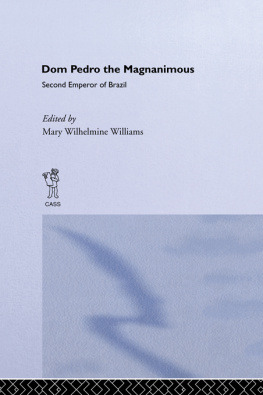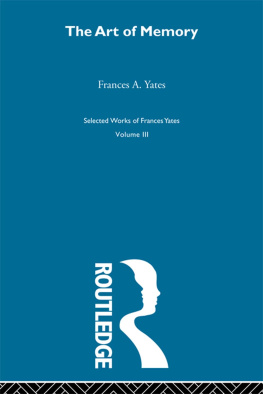PREFACE

P TO NOW, there has been no biography in English of Dom Pedro II of Brazil, who should be ranked among the ablest rulers of his century and among the finest historical characters of modern times. The present volume was written with the aim of supplying this lack. In this connection I tried to find and weigh all important available data relating to the Emperor.
Many people have aided me in my work. To the staffs of the following-named libraries I am indebted:Goucher College, Enoch Pratt, and the Library of the Peabody Institute in Baltimore, the Columbus Memorial Library of the Pan American Union, the Library of Congress, the Lima Library of the Catholic University of America, the Bibliotheca Nacional of Portugal, the Bibliotheca Nacional of Brazil, the Archivo Nacional of Brazil, and the Library of the Instituto Historico e Geographico Brasileiro. Miss Eleanor Falley, librarian at Goucher College, was tireless in her efforts to secure for me inter-library loans. Dona Maria Luiza de Maia Monteiro cheerfully kept me supplied with archival materials at the Chteau dEu.
For aid in gaining access to important sources I am indebted to Mrs. Manoel de Oliveira Lima of Washington, Dr. Bertha Lutz, Madame Jeronyma Mesquita, Dr. Max Fleiuss, and the Conde de Affonso Celso, all of Rio de Janeiro, the Honorable Walter C. Thurston, formerly charg daffaires in Brazil, Professor J. Fred Rippy of the University of Chicago, Professor Percy Alvin Martin of Stanford University, and, especially, to Professor Clarence H. Haring of Harvard University and to the late Edwin Vernon Morgan, for many years American ambassador to Brazil.
The Social Science Research Council made it financially possible for me to examine in 1933 important records in Europe and in Brazil relating to the Emperor.
In solving problems connected with my researches I received aid from Miss Clarissa Rolfs of Gainesville, Florida, Sra. Lucia Furquim Lahmeyer, librarian of the Instituto Historico e Geographico Brasileiro, Dr. Alcides Bezerra, director of the Brazilian Archivo Nacional, and Dr. Manoel A. Velho da Motta Maia, the son of Dom Pedro IIs last physician.
I was helped by the following-named persons in securing certain illustrations for my book: Dr. E. Roquette Pinto, of the Brazilian Museu Nacional, Dr. Manoel A. Velho da Motta Maia, Mr. Paul A. McNeil, librarian of the Lima Library, Mr. Charles E. Babcock, librarian of the Columbus Memorial Library, and Miss Elsie Brown, editor of the Bulletin of the Pan American Union.
President Ada Comstock of Radcliffe College granted me permission to use a long quotation from Lucy Ellen Patons Elizabeth Cary Agassiz, the copyright of which belongs to the trustees of the College.
Most of all, I am under obligations to His Highness Dom Pedro de Alcantara dOrlans Bragana, grandson of Dom Pedro II, who not only gave me access to the Bragana archives at the Chteau dEu and permitted me to have copies made of many portraits at the Chteau, but also helped clear up obscurities by answering my numerous questions, and otherwise showed constant and sympathetic interest in my efforts to produce in English a worthy biography of the Emperor.
Dr. Raul dEa of Washington checked for me a number of translations from Portuguese, and my colleague Professor Eugene Newton Curtis of Goucher read and helpfully criticized the entire manuscript.
For all of this aid I am very grateful.
Finally, I wish to express appreciation of the courteous coperation of my publishers.
M. W. W.
Baltimore, Maryland
September 24, 1937.
FOUNDING OF THE BRAZILIAN EMPIRE

NE AFTERNOON in April, 1831, Rio de Janeiro was festively decked and was stirred by unusual excitement. From windows and balconies hung gay damask draperies; flags and pennants of green and gold waved in the breeze. Crowds of peopleblack, brown, and whitewere making for the large
praa in front of the imperial City Palace on the margin of the Bay. Some of them carried green branches of the national croton shrub in yellow bloom. The military guard drawn up in front of the palace had decorated their caps and the barrels of their muskets with glossy sprigs from coffee trees spangled with starry blossoms and green and red berries. Also in the square were the municipal officers, on horseback and wearing ancient ceremonial uniform. Presently, from vessels in the harbor and fortresses on the hills came the boom of cannon. The crowds shouted joyfully, Long live Dom Pedro II, Emperor of Brazil!
On a second-floor balcony of the palace was their sovereign, surrounded by his sisters and his ministers of state, who were likewise splendid in the imperial green and gold. The tiny Emperor, little more than five years old, was standing on a chair, that the people might more easily see him. He was a delicatelooking child, with light golden hair, fair skin, and German blue eyes, and with a slightly projecting lower lip which betokened his Habsburg ancestry. In almost baby wonder he gazed upon his cheering subjects and responded to their vivas by waving a handkerchief. On an English war vessel in the harbor was his father, Dom Pedro I, who had abdicated the Brazilian throne two days before and was soon to leave for his
The Bragana family and the two countries over which it ruled had long known perplexing problems; but difficulties had thickened about a generation ago, when Brazil was still a mere colony. Napoleon Bonaparte was at the time trying to make himself dictator of Europe and of lands beyond. England, the chief hindrance to his success, had been an ally of Portugal for more than four centuries. Repeatedly she had used her superior strength to impose upon and exploit the little Iberian kingdom, but Portugal, forced to choose between the devil of Napoleons unscrupulousness and the deep, blue sea of British greed, inclined to the latter; for, after all, England was her best friend. Napoleon was bent upon starving England into submission, through strict enforcement of the continental blockade; but Portugal, bolstered by British agents, refused to coperate. Since French invasion and conquest seemed imminent, it was decided that the Portuguese royal family and court should take refuge in the colony of Brazil. Accordingly, on November 29, 1807, a fleet of thirty-six vessels bearing the Bragana family and many thousands of nobles and hangers-on sailed out the mouth of the Tagus, under convoy of a British squadron, and set off across the Atlantic. Shortly afterwards Napoleons army occupied Lisbon.








 P TO NOW, there has been no biography in English of Dom Pedro II of Brazil, who should be ranked among the ablest rulers of his century and among the finest historical characters of modern times. The present volume was written with the aim of supplying this lack. In this connection I tried to find and weigh all important available data relating to the Emperor.
P TO NOW, there has been no biography in English of Dom Pedro II of Brazil, who should be ranked among the ablest rulers of his century and among the finest historical characters of modern times. The present volume was written with the aim of supplying this lack. In this connection I tried to find and weigh all important available data relating to the Emperor. NE AFTERNOON in April, 1831, Rio de Janeiro was festively decked and was stirred by unusual excitement. From windows and balconies hung gay damask draperies; flags and pennants of green and gold waved in the breeze. Crowds of peopleblack, brown, and whitewere making for the large praa in front of the imperial City Palace on the margin of the Bay. Some of them carried green branches of the national croton shrub in yellow bloom. The military guard drawn up in front of the palace had decorated their caps and the barrels of their muskets with glossy sprigs from coffee trees spangled with starry blossoms and green and red berries. Also in the square were the municipal officers, on horseback and wearing ancient ceremonial uniform. Presently, from vessels in the harbor and fortresses on the hills came the boom of cannon. The crowds shouted joyfully, Long live Dom Pedro II, Emperor of Brazil!
NE AFTERNOON in April, 1831, Rio de Janeiro was festively decked and was stirred by unusual excitement. From windows and balconies hung gay damask draperies; flags and pennants of green and gold waved in the breeze. Crowds of peopleblack, brown, and whitewere making for the large praa in front of the imperial City Palace on the margin of the Bay. Some of them carried green branches of the national croton shrub in yellow bloom. The military guard drawn up in front of the palace had decorated their caps and the barrels of their muskets with glossy sprigs from coffee trees spangled with starry blossoms and green and red berries. Also in the square were the municipal officers, on horseback and wearing ancient ceremonial uniform. Presently, from vessels in the harbor and fortresses on the hills came the boom of cannon. The crowds shouted joyfully, Long live Dom Pedro II, Emperor of Brazil!